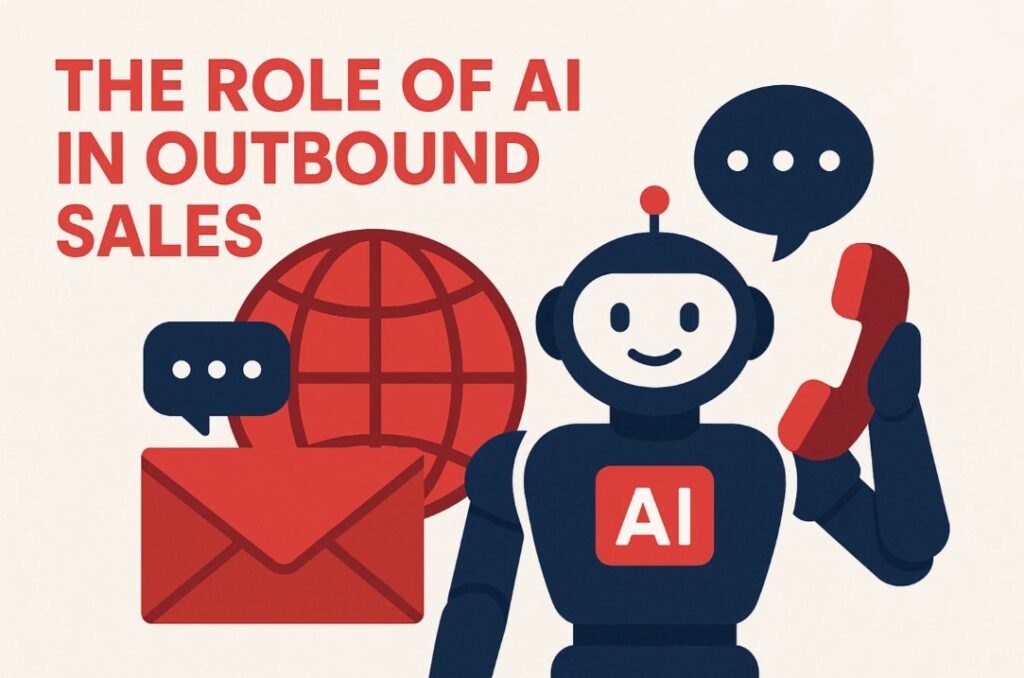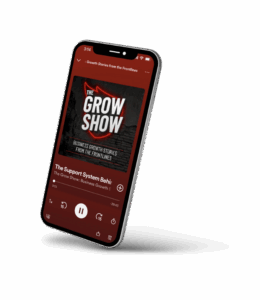Lead Generation vs Appointment Setting: Key Differences and Benefits

Understanding Lead Generation
Lead generation is the initiation of consumer interest or inquiry into the products or services of a business. It’s all about creating awareness and capturing the interest of potential customers. This phase is crucial because, without leads, there would be no prospects to convert into paying clients.
Effective lead generation in today’s competitive marketplace can set a business apart, allowing it to thrive even in saturated industries. By leveraging various strategies and tools, companies can attract potential customers and build a brand reputation that fosters trust and loyalty.
The Purpose of Lead Generation
The primary purpose of lead generation is to create a pool of interested individuals who have shown some level of engagement with your brand. By generating leads, businesses can build a database of potential customers that can be nurtured over time. This process also helps identify which prospects are more likely to convert, allowing companies to focus their efforts effectively.
Additionally, lead generation is a valuable feedback mechanism; businesses can refine their marketing strategies and better align their offerings with consumer demands by analyzing the leads generated.
The Process of Lead Generation
Lead generation typically involves several stages, including:
- Creating high-quality content that attracts visitors
- Utilizing social media channels to engage users
- Implementing SEO strategies to improve visibility
- Running targeted advertising campaigns
- Collecting contact information through forms or offering gated content
Once leads are generated, the next step is to nurture these relationships through consistent communication, providing value, and addressing their pain points. This nurturing process often includes personalized email marketing campaigns, informative newsletters, and follow-up calls that help maintain engagement and build rapport.
Additionally, leveraging marketing automation tools can streamline this process, allowing businesses to send timely and relevant messages based on user behavior, thus enhancing the likelihood of conversion.
Analyzing the effectiveness of lead generation strategies is essential for continuous improvement. Businesses should regularly assess key performance indicators (KPIs) such as conversion rates, cost per lead, and engagement metrics to determine which tactics yield the best results.
Appointment Setting Defined
While lead generation focuses on attracting potential clients, appointment setting takes it further by scheduling a meeting with these leads. This step is essential in transitioning from interest to a more personal and engaging conversation about how your product or service can meet their needs.
The importance of this transition cannot be overstated; it allows businesses to move beyond mere interest and into the realm of relationship building, which is crucial for long-term success.
How Appointment Setting Works
The appointment setting process usually consists of several key elements:
- Identifying qualified leads who are ready for a more in-depth conversation
- Contacting leads through phone calls, emails, or direct outreach
- Effectively communicating the value proposition and securing a commitment for a meeting
- I am following up to confirm the appointment and ensure consistency in communication
A dedicated sales team or an appointment setting service often carries out this process focused on converting leads into valuable opportunities. The effectiveness of appointment setting can be significantly enhanced by leveraging technology, such as CRM systems and automated scheduling tools, which streamline the process and allow better tracking of interactions with potential clients.
The art of appointment setting is not just about the initial contact; it also involves nurturing the relationship post-appointment. This includes sending personalized reminders, providing valuable resources related to the meeting topic, and following up after the appointment to gather feedback. Such practices reinforce the connection with the lead and position the business as a trusted advisor, paving the way for future interactions and potential sales opportunities.
Lead Generation Service | Appointment Setting Service | |
Sales Funnel Stage | Early stage – Building awareness and interest. | Mid-to-late stage – Engaging qualified prospects. |
Objective | Drive visibility, capture interest, and gather potential customer data. | Qualify prospects, deliver personalized outreach, and schedule sales meetings. |
Tactics | Content marketing, lead magnets, lead databases, cold email campaigns. | Cold calls, cold emails, inbound lead follow-ups through scheduling forms. |
KPIs | Lead volume, cost per lead (CPL), engagement time, clicks, lead quality score, MQL and SQL conversion rates. | Number of appointments set, lead-to-appointment conversion rate, cost per appointment (CPA), show rate, post-appointment conversion rate. |
Deliverables | Curated lead lists with detailed prospect data for further outreach. | Confirmed sales appointments with high-intent buyers. |
Pricing Models | Cost per lead: $30 to $400 per lead | Commission: 10% to 30% of revenue generated Hourly rates: $50 to $200 per hour Flat retainer: $1,000 to $10,000 per month Pay per appointment: $50 to $500 per appointment Project-based: $2,000 to $20,000 Hourly rates: $100 to $300 per hour Flat retainer: $3,000 to $15,000 per month |
Key Differences Between Lead Generation and Appointment Setting
While lead generation and appointment setting may seem similar, they serve different purposes within the sales funnel. Understanding these differences is essential for crafting an effective sales strategy.
Goals and Objectives
The goal of lead generation is to create interest and build a pipeline of potential clients, while the objective of appointment setting is to secure meaningful conversations that can lead to conversions. In essence, lead generation is all about quantity and attracting many leads.
In contrast, appointment setting emphasizes quality, focusing on engaging individuals genuinely interested in a product or service. This distinction is crucial, as it influences how businesses allocate resources and measure success.
For instance, a company may prioritize lead generation during a product launch to maximize exposure while shifting focus to an appointment setting as the sales cycle progresses, ensuring that the most promising leads are nurtured into clients.
Techniques and Strategies
Lead generation techniques often include digital marketing strategies such as SEO, content marketing, and social media outreach. On the other hand, appointment setting relies heavily on direct communication methods, including cold calling, personalized emails, and follow-up strategies.
Both techniques require different skill sets and approaches, but are equally essential in sales. Lead generation often leverages analytics and data-driven insights to optimize campaigns and target specific demographics. At the same time, appointment setting requires strong interpersonal skills and the ability to read potential clients’ cues.
Inbound Lead Generation Strategies | Outbound Lead Generation Strategies | |
Primary Methods | SEO, content marketing, pay-per-click ads, referrals (like Clutch). | Cold email outreach, cold calling, social media prospecting, purchasing lead lists. |
Engagement Tools | Landing pages, pop-up forms, lead magnets (gated content), newsletters. | Direct email campaigns, phone calls, trade shows, networking events. |
Audience Targeting | Organic traffic attraction, educational resources, content-driven targeting. | Direct prospect targeting, lead databases, event-based networking. |
Conversion Tactics | Capture through optimized web forms and gated resources. | Personalized outreach with a focus on immediate responses and scheduling. |
Best Use Cases | Long-term brand building, educational positioning. | Short-term lead capture, direct sales efforts. |
Measurement of Success
Another critical difference lies in how success is measured in each area. Lead generation success is typically quantified by metrics such as the number of leads generated, conversion rates from leads to opportunities, and overall traffic to marketing assets.
In contrast, appointment setting success is measured by the number of appointments secured, the quality of those appointments, and, ultimately, the conversion rate from appointments to closed deals.
This difference in measurement highlights each function’s unique contributions to the overall sales strategy, emphasizing the need for alignment between marketing and sales teams to ensure that lead generation and appointment setting efforts effectively support one another.
“Quality is not a cost—it’s an essential KPI. Without quality checks in place and enforced, businesses risk sacrificing their hard-earned reputation, not to mention customer loyalty, just for the sake of growth. It is essential that business leaders start viewing quality control as a KPI rather than a cost of growth."
Scott Scully, CEO of Abstrakt
Ensuring Alignment Between Lead Generation and Appointment Setting
Lead generation and appointment setting are largely complementary strategies. Both work together to maximize sales potential and ensure that leads are effectively nurtured toward conversion.
Increased Sales and Profitability
One of the most significant benefits of lead generation is its potential to drive sales. Businesses can tap into new markets and increase revenue streams by continuously attracting new leads. As a steady influx of leads comes in, the opportunity for conversion multiplies, leading to higher profitability.
A well-structured lead generation process allows businesses to identify and prioritize high-quality leads, ensuring that sales efforts are focused on prospects most likely to convert. This targeted approach enhances efficiency and maximizes the return on investment for marketing campaigns.
Building Brand Awareness
Effective lead generation strategies contribute to building brand awareness in the marketplace. Your brand becomes more recognizable as more people engage with your content and business. This increased visibility drive leads and establishes the brand’s authority and reputation within its industry, fostering trust with potential customers.
Similarly, when leads share their positive experiences with your brand through social media or word-of-mouth, it creates a ripple effect that can amplify your reach and attract even more potential customers. Engaging content, such as informative blog posts or eye-catching infographics, can be powerful tools in this process, encouraging sharing and interaction.
Lead generation allows businesses to gather valuable data about their target audience, including preferences and behaviors. This information can be leveraged to refine marketing strategies, tailor content to meet specific needs, and ultimately create a more personalized experience for potential customers.
“Effective lead generation isn't just about volume—it's about quality interactions that nurture relationships and build a foundation for long-term growth."
Jeff Winters, CRO of Abstrakt
When to Consider Lead Generation Over Appointment Setting
You Want to Expand Market Reach
If your goal is to reach new or untapped markets, lead generation is more effective than appointment setting. It allows you to cast a broader net by targeting audiences who may not yet be aware of your offerings.
This approach can be particularly useful when launching new products, entering new geographic areas, or expanding your customer base into different demographics.
You Need Help Nurturing Cold Audiences
When dealing with cold or unqualified audiences who have little familiarity with your brand or services, lead generation is essential. It provides a gradual way to educate and build trust through targeted content, email marketing, and informative resources.
This strategy allows potential customers to learn about your business on their terms, increasing the likelihood of engagement over time.
You Want a Consistent Sales Pipeline
Lead generation plays a critical role in maintaining a healthy and consistent pipeline of potential customers. By continuously attracting and capturing interest from new prospects, you can ensure a steady flow of leads entering your sales funnel.
This approach prevents over-reliance on a limited pool of warm leads and helps sustain long-term revenue growth.
You Want to Build Long-Term Relationships
If your business thrives on long-term customer relationships and loyalty, lead generation provides a foundation for ongoing engagement. Through personalized nurturing campaigns, businesses can stay connected with leads over time, gradually building relationships and earning trust before initiating direct sales conversations.
This strategy is particularly effective for high-ticket or complex sales cycles where decision-making takes longer.
You Need to Stay Within Your Budget
Lead generation can be more cost-effective than appointment setting, especially for businesses in the early stages of growth. Rather than focusing on labor-intensive one-on-one sales meetings, lead generation strategies such as webinars, downloadable resources, and automated email campaigns can generate interest at scale with minimal direct involvement from sales staff.
You Need Help Communicating Your Service
If your product or service requires significant education or explanation before a purchase can be made, lead generation is a better choice. It allows you to share resources like eBooks, videos, and case studies that inform potential customers without pressuring them into a sales meeting prematurely.
You Want a Multi-Touch Sales Processes
In industries where multiple interactions are necessary before a sale, lead generation supports a multi-touch sales process by keeping prospects engaged with consistent, helpful content.
This strategy ensures that your business remains in contact with potential clients, increasing the likelihood of eventual conversion.
You Struggle to Engage a Broad Audience
Lead generation is ideal for businesses targeting a wide audience rather than focusing on a small group of highly qualified prospects. It allows you to gather interest from a diverse range of people, some of whom may become ready for direct sales conversations later through proper nurturing efforts.
Why Consider Appointment Setting Over Lead Generation?
Higher Conversion Potential
Appointment setting prioritizes engaging directly with pre-qualified leads who have already shown significant interest in your offerings. This direct interaction allows sales representatives to address objections, clarify details, and build rapport, significantly increasing the likelihood of closing a sale compared to the broader, less targeted approach of lead generation.
Time Efficiency
If your business needs to streamline the sales cycle and reduce the time between initial interest and closing a deal, appointment setting offers a more direct path. By focusing on booking sales meetings with interested prospects, you eliminate unnecessary touchpoints and nurture stages, making the process more time-efficient for both the sales team and the prospect.
Focused Sales Efforts
Appointment setting helps sales teams stay focused on selling rather than spending time on prospecting and lead qualification. It allows marketing or specialized appointment setters to handle the initial stages of outreach, freeing sales professionals to concentrate on closing deals and having meaningful conversations with already-engaged leads.
When Dealing with a Niche Market
In highly specialized industries or niche markets, where the target audience is limited, appointment setting can be more effective than broad lead generation. Reaching out directly to a well-defined group of potential clients ensures personalized communication and a higher likelihood of engagement, making appointment setting a more strategic choice.
Re-Engaging Dormant Leads
Appointment setting is also ideal when re-engaging existing leads who have previously interacted with your business but never converted.
By reaching out directly for a scheduled meeting, you can reignite interest and uncover new opportunities that may have been overlooked in earlier stages of the sales process.
When Offering Consultative or Service-Based Sales
If your business model relies heavily on consultative sales or personalized service offerings, appointment setting creates opportunities for deeper conversations. It allows sales professionals to understand the prospect’s unique needs and tailor solutions more effectively, which is often critical for service-based industries where customization is a key selling point.
Urgent Sales Targets and Campaigns
When running time-sensitive promotions, product launches, or end-of-quarter sales drives, appointment setting can be more effective than lead generation for meeting immediate sales goals. It provides a direct approach to reaching out to potential clients who have already shown interest, helping businesses capitalize on urgency and limited-time offers.
Better Resource Allocation
Appointment setting helps companies optimize their internal resources by separating prospecting from closing activities. Instead of having highly skilled sales reps spend time chasing unqualified leads, appointment setters handle the early outreach and qualification work. This allows sales professionals to dedicate their time to high-value conversations and closing deals, while marketing and sales support teams can focus on pipeline growth.
Stronger Relationship Building
Appointment setting fosters a stronger personal connection between the sales team and potential clients. The one-on-one interaction helps build trust and allows for a customized approach, which can be especially beneficial in industries where relationships drive long-term customer retention and loyalty.
Wrapping Up
Both lead generation and appointment setting play critical roles in a successful sales strategy, each serving unique purposes in attracting, engaging, and converting potential customers. Lead generation focuses on building awareness and creating a pipeline of interested prospects, while appointment setting helps transition those prospects into meaningful conversations that can lead to sales. By understanding their differences and how they complement each other, businesses can develop a balanced approach that nurtures long-term growth while achieving immediate sales goals.
Whether you’re expanding into new markets, targeting a niche audience, or focusing on closing deals quickly, strategically leveraging both lead generation and appointment setting can maximize your revenue potential and keep your sales pipeline healthy. Ultimately, the most effective strategy combines both elements, ensuring that no opportunity is missed as you guide potential customers through their buying journey.



